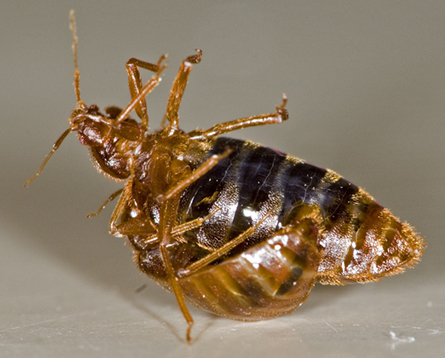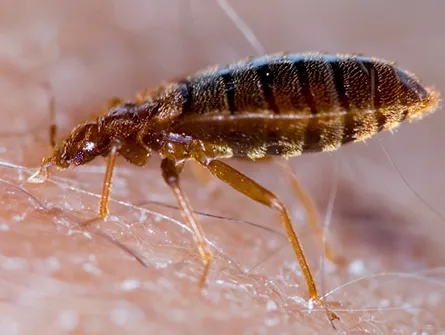Male bed bugs get confused in bed. Now a scientist has found a bug chemical signal that translates, “Whoa, buddy. I’m a guy too.”


Male bed bugs grasp and try to mate with any other member of their Cimex lectularius species that has had a full meal of blood recently, says chemical ecologist Camilla Ryne of Lund University in Sweden. Single-minded males don’t seem inclined, or even able, to distinguish other males from females at first.
At first contact, sex recognition for these insects works largely by trial and error, Ryne says. What corrects those errors, she has found, is a blend of chemicals that earlier work has also described as the bed bug alarm pheromone.
“This is the first time to my knowledge that anyone has shown that alarm pheromones are used for sexual recognition,” Ryne says.
Females can release the substance when disturbed but typically don’t when grasped by a male, Ryne says. But males do exude the scent when grabbed by another male. After a whiff of the stuff, misguided suitors back off, Ryne reports online October 24 in Animal Behaviour.
Considering that bed bugs are making a comeback as a pest in the industrialized world, “knowing how they mate is important,” says entomologist Joshua Benoit of Ohio State University in Columbus. He too has been studying the alarm pheromone, and he agrees that the bugs use it in several ways.
Pheromones may have achieved their fame in popular culture as dizzying lures for the opposite sex, but biologists have discovered plenty of other kinds of pheromones. Compounds can fuel aggression among male mice or urge baby rabbits to search for a nipple.
Bed bugs release the pheromone blend of the small, volatile molecules (E)-2-octenal and (E)-2-hexenal when disturbed, Ryne says. A mating attempt might indeed be disturbing, since males deliver their sperm by what’s called traumatic insemination. They ignore the opening to the female reproductive tract and inject sperm with a needlelike appendage directly through the outer covering of a mate’s body. In the abdominal area most commonly pierced, female bed bugs grow a mass of the kinds of cells associated with immune defense. Males, though, have no extra protection there.
To test the idea that the alarm pheromone helps mistakenly targeted males free themselves, Ryne painted nail polish over the glands that produce the substance, thus blocking its release. Males that couldn’t signal chemically ended up in longer embraces than males dabbed elsewhere with nail polish.
For a different test, Ryne collected the substance by washing disturbed males with a solvent. When she applied wafted the extract over mating pairs of males and females, the males backed off. The finding showed that even in the presence of a suitable mate, the signal disturbed the males, she says.
Ryne herself can smell the pheromone, she says. It’s a bit like almond, but not particularly pleasant. “Older people say that you used to be able to tell whose house had bed bugs because it had a peculiar smell,” she says.





